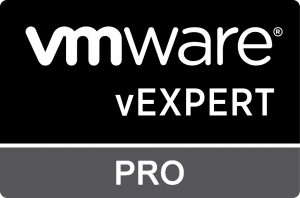Home
just another tech blog site...
Upgrading vRA 8.0 to 8.0.1: Disk space on root partition (/) on VM Disk 1 (/dev/sda4) should have atleast 20 GB of free disk space.
When doing an upgrade via LCM of vRA from 8.0 to 8.0.1, you might encounter this error: Disk space on root partition (/) on VM Disk 1 (/dev/sda4) should have atleast 20 GB of free disk space. This is because initial installation of vRA only has small disk not enough for upgrade. The issue is documented in the Known Issue for vRA 8.0.1 here To resolve, WITHOUT POWERING OFF your Virtual Appliance, go to each of the vRA
Read MoreHow to update solutions managed by VMware Lifecyle Manager
Here’s a quick how-to in updating solutions managed by VMware Lifecycle Manager. Pre-requisite: Solution must be managed by VMware Lifecycle. Add your my VMware Account to LCM Go to Settings -> Binary Mapping and Download Binary: Procedure: Login to LCM, Under Settings -> Update Product Support Pack If LCM has internet connection, initiate Check Support Packs Online Wait for the process completes. Go to requ
Read MoreDate: 08 Dec 2019
Comment: 0
VMware NSX: LB Application Rule redirect all HTTP traffic to HTTPS
Ok. This took awhile to look for so might as well blog about it. This application rule redirects ALL HTTP traffic to HTTPS using the same URI. redirect scheme https if !{ ssl_fc } To use this, you just need to create the Virtual Server that serves HTTP, attach the application rule containing the string – and youre all set 🙂 Enjoy!
Read MorevRealize Automation 8: Enterprise Cluster Installation
vRealize Automation 8 is out! This is a big release as it marks feature parity with VMware Cloud Automation Service (SaaS offering). In addition, a new architecture which eliminates the need for Windows Server. For this post, i’ll document what’s needed for an Enterprise Install of vRA8. High-level diagram: Components: 1 x Lifecycle Manager3 x Identity Manager3 x vRealize Automation Appliance2 x LB to handle IDM and
Read MoreDate: 07 Sep 2019
Comment: 797
VMworld 2019: VMware hackathon experience
Ever since they announced VMware Hackathon 4 years ago – I knew wanted to experience this first hand if given the opportunity! Fortunately, THAT opportunity came this VMworld 2019 thanks to vExpert Pro and VMware! It’s been 10 years since my last VMworld and alot has changed – with content from different VMware units (more on this on another post). One of this is unit is VMware Code which hosted gee
Read MoreDate: 25 May 2019
Comment: 5
Unable to get Kubernetes Node Metrics: http://:10255: getsockopt: connection refused
Some kubernetes action 🙂 I’ve just installed prometheus-grafana monitoring on my kubeadm built k8s cluster. This is the repo i used to do such: https://github.com/giantswarm/prometheus After installing, there was an error getting node metrics. The error: Get http://172.16.20.14:10255/metrics: dial tcp 172.16.20.14:10255: getsockopt: connection refused To fix this, you need to allow kubelet read-only port by spe
Read MoreDate: 24 May 2019
Comment: 4
How to add existing vSphere tags in terraform – vSphere Provisioner
So I’ve been using terraform for quite sometime now for building-tearing down my kubernetes cluster. One thing that is missing on the provisioned Virtual Machine are tags which I exclusively use for my backup-schedule retention (Veeam). Quick Introduction on Terraform: Terraform lets you “codify” the desired state of your infrastructure. This is awesome as it can be tracked/ checked-in on your favor
Read MoreDate: 21 May 2019
Comment: 2
NSX-T configuration error on ESXi Hosts
I recently uninstalled NSX-V on my environment to prepare for NSX-T. Unfortunately, I encounter the following error when I try to configure/ install NSX-T: Failed to install software on host. Failed to install software on host. esxidr01.ldc.int : java.rmi.RemoteException: [ProfileValidationError] File path of ‘/etc/vmware/firewall/netCPRuleset.xml’ is claimed by multiple non-overlay VIBs: {‘VMware_b
Read MoreDate: 07 May 2019
Comment: 0
Creation of Kubernetes Cluster: Personal Experience
More than one way to skin a cat. The old adage which basically means there are multiple ways to achieve a goal. This is no different in IT and for creating Kubernetes clusters – there have been multiple ways in standing up a fully functioning cluster. Here are some of the I’ve tried and my experience of doing it: If you want an opinionated way of doing it, go PKS (https://docs.vmware.com/en/VMware-Enterpr
Read More



